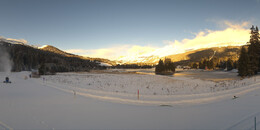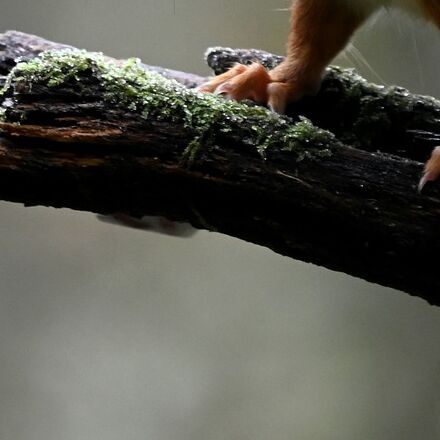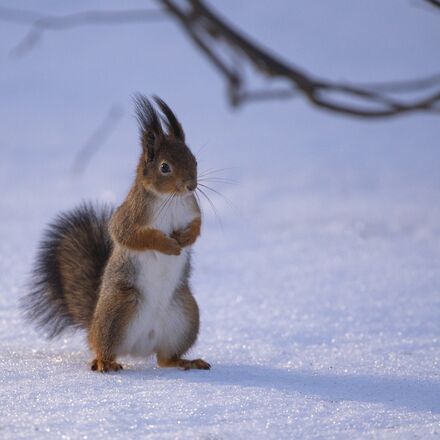Squirrel forest Lenzerheide
A magical experience for the whole family
How to get to the squirrel forest
The squirrel forest is easily accessible on foot from the village centre of Lenzerheide. The starting point is the Catholic church.
Tip: Combine your walk in the squirrel forest with a visit to lake Heidsee.
What you need to know about squirrels
Their diet varies depending on the season and the availability of food in the wild. Here are some details about their diet:
- Plant food: Squirrels mainly eat plant food such as nuts, fruits, seeds, grains, buds, flowers, and bark. They collect nuts, berries, and seeds. Plant materials such as buds, flowers, bark, and tree sap flowing from wounds are also on their menu.
- Animal food: Occasionally they also eat animal food such as insects, worms, bird eggs and snails. As predators, they also prey on worms, young birds, insects, snails, and larvae.
- Winter diet: In winter, squirrels have to stockpile food to avoid starvation. They favour seeds, which they bury directly at tree roots or push under protruding pieces of bark and between forks of branches. Their keen sense of smell helps them find the supplies. Seeds that are not found start to grow and contribute to forest regeneration and renewal.
- A squirrel needs about 100 spruce cones per day, which corresponds to an average of 80 to 100 grams.
Squirrels don't really hibernate like some other animals. Instead, they are awake and active during the winter, although they spend less time outdoors. Here are some details:
- Activity: squirrels leave their nests to forage for food and then return to their warm shelters. So they are not in a deep sleep state like animals that hibernate.
- Winter coat: In autumn, squirrels are busy collecting nuts, seeds and other food. Their fur becomes thicker and warmer to withstand the low temperatures. This insulating winter coat keeps them warm.
- Stockpiling: Squirrels bury their supplies in the ground or hide them in tree hollows. This means they have enough food available even in winter.
All in all, squirrels are amazingly adaptable animals that use various strategies to survive the cold season! 🐿️
Yes, squirrels build nests to protect themselves from the weather and predators. Here are some details:
- Nest building: Squirrels build their nests in trees, usually in forks of branches or tree hollows. They use materials such as twigs, leaves, grass, moss and bark to construct a cosy nest.
- Nest types: There are two main types of squirrel nests:
- Leaf nests: these are made from leaves, twigs, and grass and are often found in forks of branches or treetops.
- Tree cavities: Sometimes squirrels also use natural tree hollows or old woodpecker cavities as nesting sites.
- Insulation: The nests are well insulated to protect the squirrels from the cold and heat. They are particularly important in winter to keep the animals warm.
- Multiple nests: Squirrels typically build several nests in their territory. They move between these nests to avoid predators or to find food nearby.
Overall, squirrel nests are amazingly well constructed and serve as a safe haven for these agile forest dwellers! 🌿🐿️
Squirrels can have different life expectancies depending on the species, habitat, and husbandry. Here is some information:
- In the wild, European squirrels live to be around 3 to 6 years old.
- Only around a quarter of young animals survive their first year.
- Many squirrels therefore do not reach more than 6 years of age.
- Size: Squirrels reach a body length of 20 to 25 centimetres. Their bushy tail, which is almost as long as their body, is particularly striking. It can reach a length of 17 to 20 centimetres.
- Weight: These agile rodents weigh between 200 and 400 grams.
- German: Eichhörnchen
- French: Écureuil
- Italian: Scoiattolo
- Dutch: Eekhoorn
- Spanish: Ardilla
- Portuguese: Esquilo
- Swedish: Ekorre
- Finnish: Orava



















